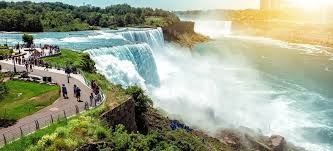In today’s fast-paced digital marketplace, first impressions are everything—especially when selling products online. E-commerce brands must rely heavily on product visuals to drive engagement, build trust, and convert browsers into buyers. Among the many techniques used to present products in their best light, Ghost Mannequin Photography stands out as a professional, clean, and effective solution, particularly for clothing and apparel retailers.
Understanding Ghost Mannequin Photography
Ghost Mannequin Photography, also known as invisible mannequin or 3D mannequin photography, is a technique where garments are photographed on a mannequin, and the mannequin is digitally removed during post-production. The result is a floating, hollow image of the product that showcases the shape, fit, and design details of the clothing without any distractions.
This method gives customers a realistic idea of how the item would look when worn, while maintaining a clean and uniform appearance across all product images. It bridges the gap between lifestyle shots and flat lay photos by offering structure without relying on models.
How It Differs from Other Photography Styles
To appreciate the value of Ghost Mannequin Photography, it’s useful to understand how it compares with other common e-commerce photography styles:
1. Model E-commerce Photography
Using models to showcase clothing can create an emotional connection with the customer. It shows how a product fits in real-life scenarios and is often used in lifestyle and high-end fashion photography. However, hiring models, stylists, and makeup artists can become costly, and the results can sometimes lack consistency if shot under different lighting or styling conditions.
2. Flat Lay Photography
Flat Lay Photography involves laying clothing items flat on a surface and shooting from above. It’s a simple, cost-effective method commonly used by startups or smaller brands. However, flat lays don’t provide a sense of depth or fit and may fail to capture the shape and structure of a garment, especially items like jackets, dresses, or tailored shirts.

3. Packshot Photography
Packshot Photography is often used for non-clothing products and involves capturing high-quality, front-facing images of a product against a plain background. While great for electronics, cosmetics, or packaged goods, this method doesn’t convey much about how clothing items look when worn.
4. 360 Product Photography
This technique involves capturing a series of images that can be compiled into a 360-degree interactive view. While 360 Product Photography is highly engaging and useful for tech or luxury goods, it can be resource-intensive and isn’t always necessary for apparel unless combined with ghost mannequin effects.
Why Your E-Commerce Brand Needs Ghost Mannequin Photography
If you’re an e-commerce clothing brand aiming to deliver professionalism, consistency, and clarity in your product images, Ghost Mannequin Photography is a must-have. Here’s why:
1. Enhances Professionalism and Visual Appeal
Clean, well-lit, and distraction-free images elevate your brand and build credibility. Ghost mannequin images offer a uniform and premium look that aligns with high-end fashion retailers and instills trust in potential buyers.
2. Improves Customer Confidence
Customers are more likely to make a purchase when they can clearly visualize how a garment will fit and flow. Ghost mannequin photography provides that insight by showing natural draping and proportions—without the potential distractions of a model or background.
3. Saves Time and Budget in the Long Run
While the setup may initially require planning, Ghost Mannequin Photography often turns out to be more cost-effective than coordinating model shoots. It eliminates the need for makeup, wardrobe prep, and extensive styling sessions.
4. Streamlines Catalog and Online Store Consistency
Ghost mannequin images provide a cohesive look across your product listings. Whether you’re launching a seasonal line or managing hundreds of SKUs, maintaining a consistent visual style helps strengthen your brand identity and simplifies navigation for customers.
5. Boosts Conversion Rates
Product images that clearly show details, textures, and structure are proven to increase sales. Shoppers who can accurately assess a product visually are less likely to hesitate—and less likely to return items due to unmet expectations.
When to Choose Ghost Mannequin Photography
Ghost mannequin images are ideal for:
- T-shirts, polos, and casual tops
- Dresses and formalwear
- Jackets and outerwear
- Activewear and lingerie
It’s particularly useful for mid- to high-end fashion retailers who want a clean, editorial-style presentation without investing in ongoing model shoots.
Partnering with Professionals
For brands seeking top-tier results, working with professional studios that specialize in Ghost Mannequin Photography is key. Third-party providers like Cliik Studios offer expert lighting, retouching, and consistency across images—saving you the hassle of in-house setups. Their team also understands how to incorporate this technique alongside Flat Lay Photography and Packshot Photography, ensuring every product is showcased to its full potential.
With the rise of mobile shopping and visual-first platforms, having polished, informative product photography is no longer optional. E-commerce success hinges on the clarity and quality of your product presentation.
Conclusion
Ghost Mannequin Photography is more than a visual trend—it’s a strategic asset for clothing brands aiming to build trust, improve conversions, and stand out in a crowded online marketplace. By combining the dimensional benefits of model photography with the clean presentation of flat lays, it offers the best of both worlds. For brands ready to elevate their online store, partnering with experienced studios like Cliik Studios can make all the difference.



















